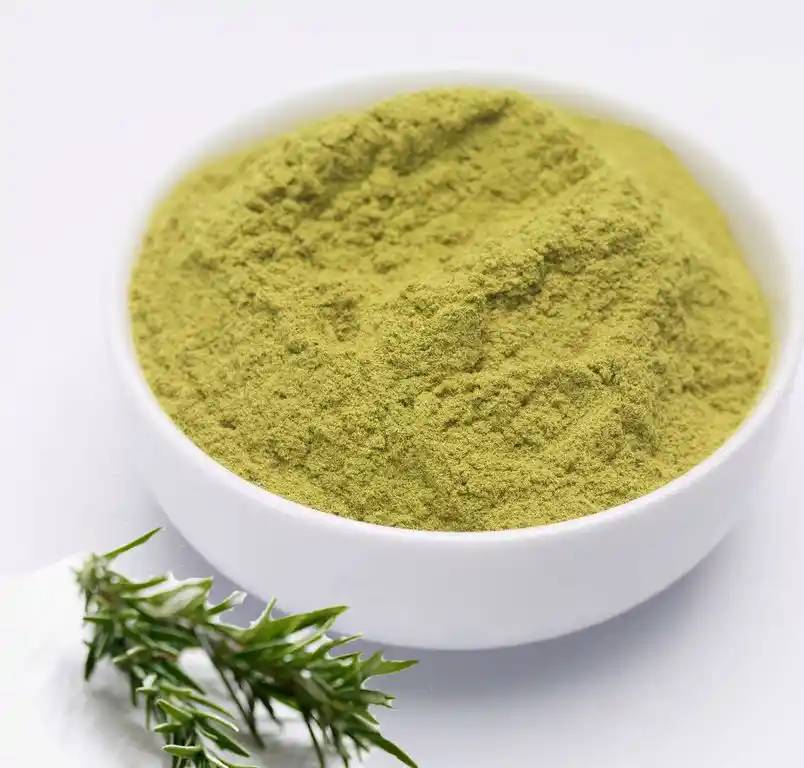What Are Rosemary Extract Ingredients and Their Uses in Animal Feeding?
Abstract:Rosemary is a natural spice plant, rich in terpenoids, flavonoids and organic acids, with anti-infective, anti-inflammatory and antioxidant activities, which can improve animal performance and product quality. In this paper, the main active substances, extraction process, physiological functions and related studies on rosemary in livestock and poultry production are reviewed, with a view to providing assistance for the further development and utilization of rosemary in animal production.
Rosemary (Rosmarinus officinalis L.), family Labiatae, genus Diego, also known as the dew of the sea. Rosemary is a small aromatic evergreen shrub with medicinal and food properties, 1 ~ 2 m tall, with clustered linear leaves and small light blue or mauve flowers. The leaves and flowers secrete volatile oils that produce a special strong aroma (Sai, Chunmei and Liang, 2012). Rosemary originated from the Mediterranean coast and was widely cultivated in southern Europe. It was introduced into China during the Cao Wei period and is now cultivated mainly in the southern region and Shandong, with rapid development of rosemary cultivation in Henan in recent years.
Rosemary likes warm climate and long sunshine, no cold winter climate is more suitable for its growth, more drought-resistant. As a natural spice, rosemary is widely used in cosmetics and food cooking, and rosemary is rich in terpenes, polyphenols, flavonoids and organic acids, which have been proved to have a variety of biological activities, such as bacteriostatic, antioxidant, anti-inflammatory and anti-tumor activities, and have the potential to be developed as drugs (Wu, Meng, and Xu, Xiao-jun, 2016). The active ingredients of rosemary can also be developed into feed additives, which has attracted much attention in recent years. A comprehensive and in-depth understanding of the active components and physiological functions of rosemary is important for the development and utilization of rosemary resources. Therefore, this paper is intended to review the main active substances, extraction process, physiological functions of rosemary and their related studies in livestock and poultry production, in order to provide a reference for the development of rosemary active substances for animal production.
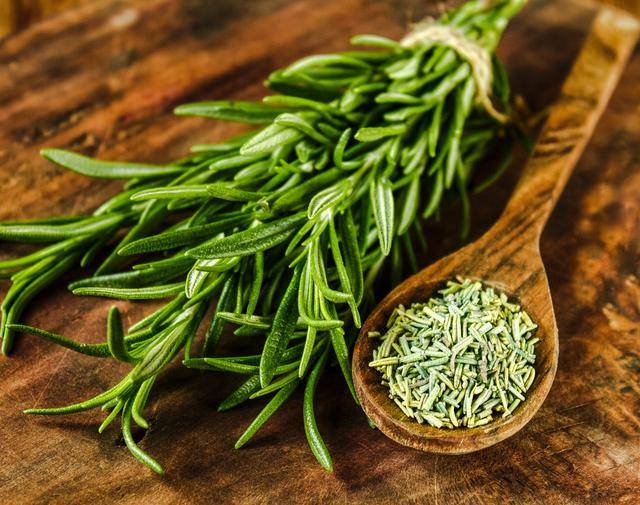
1 Active Ingredients of Rosemary Extract
The main active components of rosemary can be divided into two categories, one is volatile substances, mainly monoterpenes and sesquiterpenes, which are the main components of the essential oil of rosemary, and the other is non-volatile components, mainly polyterpenes, flavonoids, and organic acids, which are often developed as natural antioxidants (Sheng-Nan Liu et al., 2019).
1.1 Terpenes
The terpenoids in rosemary include monoterpenes, sesquiterpenes, diterpenes and triterpenes, which are the most abundant and complex components of rosemary.
1.1.1 Monoterpenes and Sesquiterpenes
Monoterpenes and sesquiterpenes are the two main classes of constituents found in the essential oil of rosemary, including 1,8-eudesmanein, α-pinene, camphor, camphene, β-pinene, geranylgeranyl, and veratryl ketone (Tadtong et al., 2015). There are 16 subclasses of rosemary and many cultivated strains, and the chemical composition of essential oils from different strains of rosemary is highly variable. Based on the differences in the relative amounts of the major components, the essential oils of rosemary can be chemotyped, and there are currently more than 13 different chemotypes of rosemary essential oils (Satyal et al., 2017). The composition of rosemary essential oil is also affected by the region and time of sample collection, extraction method and location, and preservation method. The extraction rate of rosemary essential oil from Beijing was 4.04%, which was higher than that of Guizhou (2.71%). The extraction rate of essential oil from rosemary harvested in summer was higher than that in winter, with 3.13% and 2.35%, respectively. The whole plant of rosemary can be used for essential oil extraction, with α-pinene as the main essential oil component in the leaves and lobeline in the stems (Lemos et al., 2015; Pan Yan et al., 2013).
1.1.2 Diterpenes
The diterpenoids contained in rosemary are thermally stable and do not decompose during distillation, and have a high thermal stability, mainly diterpene phenols and diterpene quinones. Diterpene phenols are the main antioxidant constituents in rosemary, mainly sage phenol, sage acid and rosmarinol, with contents of 4.21%, 0.39% and 0.12%, respectively, in the dried leaves of rosemary (Zheng and Wang, 2001; Okamura et al., 1994). The diterpene quinones in rosemary are mainly rosmariquione, royleanone, etc. (He Liwei et al., 2020).
1.1.3 Triterpenoids
The triterpenoids in rosemary are mainly triterpenoids , ursolic acid, betulinol, oleanolic acid, and betulinic acid (Hanson, 2016).
1.2 Flavonoids
There are more than 40 types of flavonoids in the herb, with a content of about 0.16%, which are also the main antioxidant substances in rosemary. Flavonoids include thujaplicins, naringin, quercetin, lignans, etc. (Ren Liping et al., 2017).
1.3 Organic Acids
The organic acids in rosemary accounted for about 5.55% of the extract, mainly rosemarinic acid, caffeic acid and p-coumaric acid (Peng et al., 2005). Among them, rosmarinic acid is considered to be an important active substance in rosemary, containing polyphenolic hydroxyl groups, which have been shown to have antioxidant, antibacterial and anti-inflammatory effects (Wang Yan, 2013). Rosmarinic acid can not only be extracted from plants, but also synthesized biologically, enzymatically and chemically (Geng, Lijun and Zhao, 2018).
1.4 Other Ingredients
Rosemary also contains sugars, glycosides, alkyl acids, amino acids and Zn, Fe, Cu, Mn and other components.
2Extraction of Ingredients Components of Rosemary
2.1 Extraction Method of Rosemary Essential Oil
The essential oil of rosemary mainly contains strong volatile components such as monoterpenes and sesquiterpenes, which can be extracted by organic solvent extraction, distillation, supercritical fluid extraction and other methods. The essential oil extracted by organic solvent extraction method has high yield and good stability, but it is easy to residual organic solvent, difficult to remove impurities, high cost, long time, and less industrialized production application. Steam distillation extraction method using essential oils are difficult to dissolve in water, and do not react with the characteristics of water, so that the essential oil components and water vapor evaporated at the same time. Steam distillation extraction of essential oils is simple and practical, low investment, the actual production of more, but the distillation time is longer, high temperature so that the essential oil components decomposition. Supercritical fluid extraction method obtains high yields of essential oils, good quality, and can well protect the active and thermally unstable components, but the investment is large, the maintenance cost of equipment is high, and the process requirements are high (Zhao Xueli et al., 2020). Enzymatic and ultrasonic methods are commonly used to assist the extraction of rosemary essential oil to improve the extraction efficiency (Zhang Lin et al., 2016).
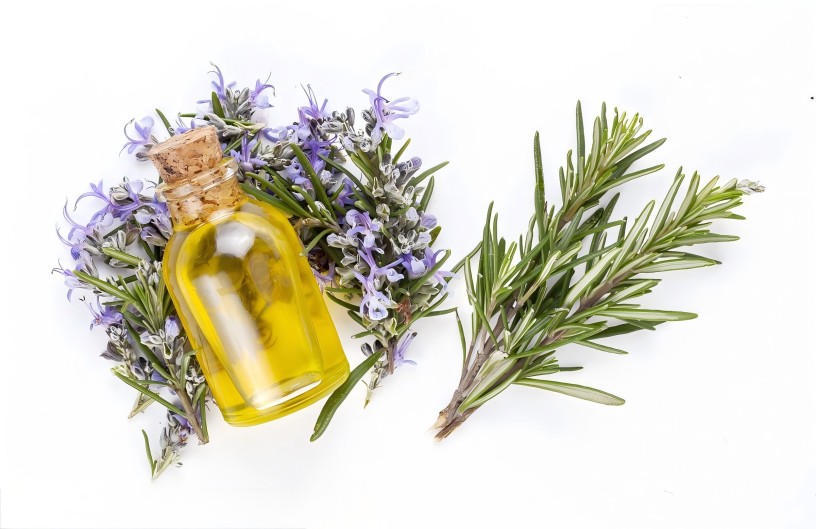
2.2 Extraction of Antioxidants from Rosemary
Another important use of rosemary is the extraction of antioxidants from the leaves of rosemary, which mainly include salvinorin, salicylic acid, rosmarinol and rosmarinic acid, etc. Currently, solvent extraction and supercritical fluid extraction are the main methods for extracting antioxidants from rosemary. Currently, the main methods for extracting antioxidant components from rosemary are solvent extraction and supercritical fluid extraction. Supercritical fluid extraction (SFE) has no solvent residue and high product quality, and is the method of choice for pharmaceutical and food companies (Rosemary Cole et al., 2006).
3 Biological Uses of the Active Ingredients of Rosemary Extract
3.1 Anti-infective
Many plants produce secondary metabolites to inhibit bacteria, which may be an adaptive response to pathogen invasion. Rosemary is nowadays widely used as a food preservative, which takes advantage of its strong antimicrobial activity (Wang et al., 2012). The antimicrobial activity of rosemary essential oil is higher than that of the single compounds 1,8-eudesmus and α-pinene, and it is possible that there is a synergistic effect between the antimicrobial compounds in the essential oil. In addition to antimicrobial properties, rosemary essential oil has insecticidal, antiparasitic and antifungal activities (Swamy et al., 2016; Luqman et al., 2007). In vitro antimicrobial assays showed good bacteriostatic activity against Gram-positive bacteria such as Staphylococcus epidermidis, Staphylococcus aureus, and Bacillus subtilis, Gram-negative bacteria such as Proteus mirabilis, Pseudomonas aeruginosa, and Escherichia coli, as well as two strains of fungi, Candida albicans and Aspergillus niger. Rosemarinic acid can increase the permeability of bacterial cell membranes, causing intracellular nutrient efflux and affecting cellular metabolism, thus exerting bacteriostatic effects (Jiang et al., 2011).
3.2 Anti-inflammatory
Inflammation is an adaptive response of the body to a foreign body, but excessive chronic inflammation can be detrimental. Rosemary is often used to treat respiratory inflammation such as bronchial asthma (Zanella et al., 2012). Rosemarinus officinalis (ROS) and Salvia divinorum (RD) phenols reduce nitric oxide (NO) and α-tumor necrosis factor (α-TNF) production by lipopolysaccharide (LPS)-activated macrophages through inhibition of nitric oxide synthase (iNOS) and cyclooxygenase-2 (COX-2). In addition, it inhibited lipopolysaccharide-induced nuclear translocation of nuclear factor-κB p65 (NF-κB) by blocking the phosphorylation and degradation of IκBα in the mouse RAW264.7 macrophage cell line. The anti-inflammatory effects of simple silymarinic acid and silybinol were weaker than those of rosemary extracts, and it is possible that the phenolic acid components of rosemary may have a synergistic effect on anti-inflammation (Kuo et al., 2011).
3.3 Antioxidant
Compared with synthetic antioxidants, plant-derived antioxidants have the advantages of being non-toxic and free of side effects, and can be used in the storage of meat, fats and oils, as well as in the prevention and treatment of oxidative damage-related diseases such as cancer, cardiovascular diseases, and neurodegeneration. In vitro antioxidant tests have shown that sage acid, sage phenol, rosemarinic acid, rosemarinol, oleanolic acid and ursolic acid have scavenging activity against 1,1-diphenyl-2-picrylhydrazyl (DPPH) radicals (Beretta et al., 2011). Sageol, rosmarinol and epi-rosmarinol also prevent lipid peroxidation by scavenging lipid free radicals (Zeng et al., 2001). Addition of sage and rosemary essential oils to mouse diets reduced oxidative stress, decreased lipid peroxidation levels in the heart and brain, and increased tissue glutathione peroxidase, catalase, and superoxide dismutase activities (Rakovi et al., 2014). Shen Tingting et al. (2014) found that rosemary extract could enhance the expression of antioxidant enzymes by regulating the key antioxidant component nuclear factor-related factor-2 (Nrf-2).
3.4 Other
Some studies have shown that Dieffenbachia also has anticancer, hepatoprotective, and neuroendocrine modulating activities (Kompelly et al., 2019).
4 Application of Rosemary Extracts in Animal Feeding
4.1 Poultry
Addition of 0.5% rosemary leaf meal to the diet improved the daily weight gain and feed-to-meat ratio of Abbott's broilers, increased plasma levels of total protein, albumin, and globulin, while decreasing glucose, total lipids, and cholesterol, and increased the lymphoid organ index and anti-sheep erythrocyte antibody levels. However, addition of more than 0.5% decreased growth performance and digestibility of most nutrients (Ghazalah and Ali, 2008). Yesilbag et al. (2011) found that the addition of rosemary oil (100, 150 mg/kg and 200 mg/kg) and rosemary leaf powder (equivalent to the above mentioned essential oils) to diets tended to improve the performance of Ross-308 broilers by decreasing malondialdehyde and E. coli levels in the meat, lowering the pH of the meat and improving the flavor. Mathlouthi et al. (2011) demonstrated that the addition of 100 mg/kg of essential oil of Dieppe to the diet significantly improved the daily weight gain and feed conversion efficiency of Abbott's broilers. Addition of 150 and 200 mg/kg of rosemary essential oil to the diet of Jinghai yellow chickens improved their performance and meat quality (Li Aihua, 2014), antioxidant capacity (Liu Dalin et al., 2014) and thymus index (Liu Yannan et al., 2016). Tang et al. (2018) showed that purified rosemary extract (>95% rhamnosus acid) ameliorated myocardial injury, induced high expression of heat shock proteins CRYAB and HSP70, and reduced levels of creatine kinase, lactate dehydrogenase, and cardiac myocardial creatine kinase in heat-stressed broilers.Rostami et al. (2018) found that the addition of 0.5% and 1% rosemary extracts to diets was associated with lower vitamin B and higher vitamin C levels. Rostami et al. (2018) found that the addition of 0.5% and 1% rosemary extract to the diet interacted with vitamin E to modulate humoral immunity in broilers.
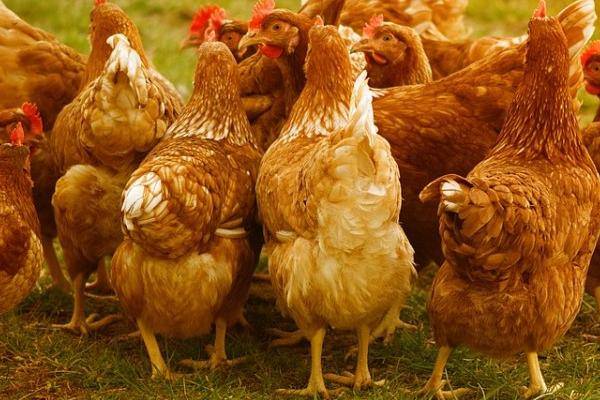
Mahgoub et al. (2019) found that the addition of 1~2 mL/kg of rosemary cold-pressed essential oil (containing about 3.5 g/kg polyphenols) to the diet improved performance, carcass quality and antioxidant capacity, and reduced the number of harmful ileal microorganisms in quails. Addition of rosemary essential oil (150, 250 mg/kg) to the diet reduced lipid peroxidation in the testes of heat-stressed quails, alleviated tissue damage, increased spermatogonial cell counts, and reduced apoptosis (Türk et al., 2016).
Yang Jiansheng et al. (2016) showed that the addition of 0.3% rosemary herb powder to the diet of laying hens increased egg production rate and average daily total egg weight, improved egg yolk color, and increased serum albumin level. Adding 0.6% rosemary herb powder to the diet of laying hens significantly improved the antioxidant capacity and egg quality of eggs during the high temperature season (An Tingting et al., 2017) and reduced the expression of heat shock protein 70 (HSP70) gene in the ovary, uterus, heart, lungs, and kidneys, and increased the expression of lysozyme gene in the ovary, isthmus, heart, liver, spleen, lungs, small intestine, and adeno-gastric region, and alleviated the damage caused by heat stress on the performance of laying hens (Wang Xiaohui et al., 2017). damage of heat stress on the production performance of laying hens (Wang, Xiaohui et al., 2019).
4.2 Pigs
The addition of rosemary essential oil (250 mg/kg) to the diet increased the average daily gain of weaned piglets, reduced the feed-to-weight ratio, and increased the apparent digestibility of crude protein, calcium, and phosphorus (Li, Fangfang et al., 2019). Ma Hong et al. (2021) found that the addition of encapsulated rosemary essential oil (300 mg/kg) to diets increased the feed conversion efficiency of weaned piglets, the apparent digestibility of crude fat and neutral detergent fiber, and the activity of serum glutathione peroxidase.Liotta et al. (2015) found that the addition of rosemary extract (1 g/kg) to swine diets increased unsaturated fatty acid content and improved the unsaturated fatty acid content of pig meat. Malo et al. (2011) showed that rosemary extract protected against the effects of freezing and thawing on porcine spermatozoa quality, increased sperm viability, and reduced lipid peroxidation levels.
4.3 Ruminants
Addition of rosemary diterpenes (silymarinic acid and silybinol, 600 mg/kg) to the diet of meat goats resulted in deposition into the meat, reducing meat oxidization and microbial counts, etc. (2015). Addition of distilled rosemary leaves to the diet of ewes did not negatively affect milk yield and quality and increased the content of flavonoids (e.g. hesperidin, naringenin, coriander), gallic acid and phenolic diterpenes (rhamnosus acid and rhamnol) in sheep's milk, and polyphenolics such as rhamnolic acid, rhamnosus acid and rhamnol could be transferred to the plasma of young lambs (Jordán et al., 2010). Chiofalo et al. (2010) added rosemary extract (600, 1200 mg/head-d) to the diet of ewes and found that milk yield and milk levels of protein, casein, fat and lactose were higher in the high-dose group than in the low-dose group and the control group; the addition of rosemary extract decreased the curdling time and increased the hardness of curd.Boutoial et al. (2013) found that the addition of distilled peroxide to the diet of dairy goats resulted in the reduction of the curdling time and the increase of curd hardness. Boutoial et al. (2013) found that the addition of distilled rosemary (20%) to the diet of dairy goats reduced the curdling time, dry matter and lactose content of pasteurized milk; 10% addition decreased the percentage of C14 fatty acids and increased the levels of C18:2 and polyunsaturated fatty acids (PUFA), while 20% reduction in the levels of C10 and C14 increased the percentages of C17, C18:2 and PUFA; 20% addition significantly affected the protein content of cheese. The addition of rosemary to the diet significantly affected cheese protein content, pH and water activity. Addition of rosemary extract (2.14 g/kg) to the diet increased serum glutathione peroxidase (GSH-Px), immunoglobulin A (IgA) and immunoglobulin M (IgM) levels in dairy goats (Ziyang Zhang et al., 2021).
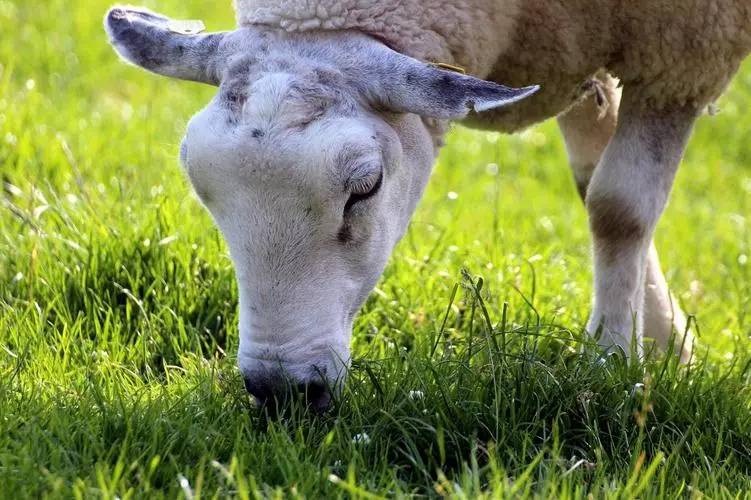
De Oliveira Monteschio (2017) found that the addition of a dietary supplement of essential oils of dieppe (4 g/head-d) reduced lipid oxidation of beef, improved meat quality and increased rack life. In a study by O'Grady et al. (2006), the addition of a dietary supplement of 1000 mg/head-d of a herbicide extract to beef cattle diets was found to improve the lipid stability and meat color of the meat.
5 Summary
Rosemary is rich in terpenoids, flavonoids and organic acids with antibacterial, anti-inflammatory and antioxidant activities, which can improve the performance of livestock and poultry, intestinal health, antioxidant status and the quality of livestock products. The application effect of rosemary in animal production is affected by factors such as the source of samples, the production process and the amount of additives, etc. The formulation of appropriate product standards is particularly important for the evaluation and application of rosemary. Currently, the research on rosemary in livestock production is not systematic enough, e.g. the molecular mechanisms for intestinal health and antioxidant activity are still not clear.
Reference:
[1] AN Tingting, XIN Shijie, DAI Guojun, et al. Effects of dietary rosemary addition on egg quality and its antioxidant properties at different storage times during high temperature season[J]. Journal of Yangzhou University: Agriculture and Life Science Edition, 2017, 38(1): 35 ~ 39.
[2] Geng Lijun, Zhao Shujuan . Research progress of biosynthesis method of rosemarinic acid[J]. Journal of Shanghai University of Traditional Chinese Medicine, 2018, 32(2): 95 ~ 99.
[3] HE Liwei, FU Chenqing, YAO Shan, et al. Brief description of the active components of rosemary extract and their pharmacological effects[J]. Zhejiang Agricultural Science, 2020, 61(10): 2068 ~ 2073.
[4] Li Aihua . Effects of rosemary extract on meat performance , meat quality and some blind intestinal microorganisms of Jinghai yellow chickens[D]. Yangzhou University, 2014.
[5] LI Fangfang, YANG Jingjing, ZHANG Ruiyang, et al. Effects of essential oils on growth performance, serum biochemical indexes and nutrient apparent elimination rate of weaned piglets[J]. Journal of Animal Nutrition , 2019, 31(3): 1428 ~ 1433.
[6] LIU Dalin, WANG Kui, YANG Junxiu, et al. Research on the effects of essential oil of Diepepa on the growth performance, meat quality and antioxidant indexes of Jinghai yellow chickens[J]. Chinese Journal of Animal Husbandry , 2014, 50(11): 65 ~ 68.
[7] LIU Shengnan, MA Yunfang, FAN Liumin, et al. Research progress on active components and physiological functions of rosemary[J]. Agricultural Products Processing, 2019, 13: 79 ~ 83.
[8] LIU Yanan, LI Aihua, XIE Kaizhou, et al. Effects of rosemary extract on growth performance, immune organ index and serum antioxidant activity in Jinghai yellow chickens [J]. Chinese Journal of Veterinary Medicine , 2016, 36(7): 1218 ~ 1223, 1272.
[9] MA Hong, MA Jiayu, LONG Shenfei, et al. The effects of rosemary essential oil on the growth performance, apparent digestibility of nutrients, serum immunity and antioxidant indexes of weaned piglets[J]. Journal of Animal Nutrition, 2021, 33(12): 6740 ~ 6748.
[10] PAN Yan, BAI Hongtong, LI Hui, et al. Effects of cultivation area, harvesting season and plant age on essential oil composition and antibacterial activity of rosemary[J]. Journal of Botany, 2013, 47(6): 625 ~ 636.
[11] REN Liping, LI Xianjia, JIN Shaoju. Separation and purification of total flavonoids and antioxidant activity of rosemary leaves by macroporous resin[J]. China Flavorings, 2017, 42(4): 69 ~ 73.
[12] Sai Chunmei, Liang Xiaoyuan . Pharmacognostical studies on rosemary[J]. Yunnan Journal of Traditional Chinese Medicine , 2012, 33(11): 65 ~ 66.
[13] WANG Xiaohui, XIN Shijie, ZOU Wenbin, et al. Effects of dietary supplementation of rosemary and combination of vitamin E, vitamin C and soybean oil on the expression of HSP70 and LYZ genes in different tissues of laying hens during high temperature[J]. Chinese Journal of Veterinary Medicine, 2019, 39(4): 767 ~ 773.
[14] WANG Yan . Biological functions of rosmarinic acid and its application prospect in animal husbandry [J]. Guangdong Feed, 2013, 22(12): 31 ~ 34.
[15] WU Meng, XU Xiaojun. Recent Research Progress on Chemical Composition and Pharmacological Actions of Rosemary [J]. Biomass Chemical Engineering, 2016, 50(3): 51 ~ 57.
[16] Yang Jiansheng, Lin Yuxin, An Tingting, et al. Effects of rosemary vanilla powder on egg laying performance, egg quality and serum index of hens at high temperature[J]. China Feed, 2016, 19: 9 ~ 11, 25.
[17] ZHANG Lin, YANG Su Lin, ZHANG Guoliang, et al. Research on the extraction and separation and purification process of diebelic acid [J] . Guangzhou Chemical Industry, 2016, 44(19): 105 ~ 107.
[18] ZHANG Ziyang, XIAO Hongyan, LING Hao, et al. Effects of adding rosemary extract to feed on the productivity, antioxidant capacity and immune function of dairy goats[J]. Journal of Animal Nutrition, 2021, 33(10): 5771 ~ 5780.
[19] ZHAO Xueli, WU Huihui, ZHAO Zhengshan, et al. Extraction process of rosemary and its application in food[J]. Grain and Oil, 2020, 33(3): 31 ~ 33.
[20] SHEN Tingting, CHEN Wen, ZHAO Jiang, et al. Modulation of Nrf2 and downstream antioxidant genes by rosemary extract in high-fat diet-fed hamsters[J]. Journal of Nutrition, 2014, 36(5):475~480.
[21] Beretta G, Artali R, Facino R M, et al. An analytical and theo- retical approach for the profiling of the antioxidant activity of essen - tial oils : the case of Rosmarinus officinalis L [J].J Pharm Biomed, Anal, 2011, 55(5):1255 ~ 1264 .
[22] Boutoial K, Ferrandini E Rovira S, et al. Effect of feeding goats with rosemary (Rosmarinus officinalis spp.) by -product on milk and cheese properties [J].Small Rumin Res, 2012, 112(1 ~ 3):147 ~ 153.
[23] Chiofalo B , Riolo E B , Fasciana G, et al. Organic management of dietary rosemary extract in dairy sheep: effects on milk quality and clotting properties[J].Vet Res Commun, 2010, 34(s1):197 ~ 201.
[24] de Macedo L M, Santos M D, Milit o L, et al. Rosemary
(Rosmarinus officinalis L., syn Salvia rosmarinus Spenn.) and its top- ical applications: a review [J].Plants, 2020, 9(5): 651 ~ 662.
[25] de Oliveira Monteschio J, de Souza K A, Vital A C P, et al. Clove and rosemary essential oils and encapsulated active principles (eugenol, thymol and vanillin blend) on meat quality of feedlot-finished heifers[J].Meat Sci, 2017, 130: 50 ~ 57.
[26] Ghazalah A A, Ali A M. Rosemary leaves as a dietary supplement for growth in broiler chickens [J].International J Poult Sci, 2008, 7(3): 234 ~ 239.
[27] Hanson J R. Rosemary, the beneficial chemistry of a garden herb [J].Sci Prog, 2016, 99(1): 83 ~ 91.
[28] Jiang Y, Wu N, Fu Y J, et al. Chemical composition and antimi- crobial activity of the essential oil of rosemary [J].Environ Toxicol Pharmacol, 2011. 32(1):63 ~ 68.
[29] Jordán M J, Moino M I, Martínez C, et al. Introduction of dis- tillate rosemary leaves into the diet of the Murciano -Granadina goat: transfer of polyphenolic compounds to goats' milk and the plasma of suckling goat kids [J].J Agric Food Chem, 2010, 58(14):8265 ~ 8270.
[30] Kompelly A, Kompelly S, Vasudha B, et al. Rosmarinus offici- nalis L.: an update review of its phytochemistry and biological activi - ty [J].J Drug Deliv, 2019, 9(1):323 ~ 330.
[31] Kuo C F, Su J D, Chiu C H, et al. Anti-inflammatory effects of supercritical carbon dioxide extract and its isolated carnosic acid from Rosmarinus officinalis leaves [J].J Agric Food Chem, 2011, 59(8): 3674 ~ 3685.
[32] Lemos M F, Lemos M F, Pacheco H P, et al. Seasonality modi- fies rosemary's composition and biological activity [J].Ind Crops Prod, 2015, 70: 41 ~ 47.
[33] Liotta L, Chiofalo V, D'Alessandro E, et al. Supplementation of Rosemary extract in the diet of Nero Siciliano pigs: evaluation of the antioxidant properties on meat quality [J].Animal, 2015, 9(06): 1065 ~ 1072.
[34] Luqman S, Dwivedi G R, Darokar M P, et al. Potential of rose- mary oil to be used in drug-resistant infections [J].Altern Ther Health Med, 2007, 13(5): 54 ~ 59.
[35] Mahgoub S A M, El-Hack M E A, Saadeldin I M, et al. Impact of Rosmarinus officinalis cold -pressed oil on health, growth perfor- mance, intestinal bacterial populations, and immunocompetence of Japanese quail [J].Poult Sci, 2019, 98(5): 2139 ~ 2149.
[36] Malo C, Gil L, Cano R, et al. Antioxidant effect of rosemary (Rosmarinus officinalis) on boar epididymal spermatozoa during cryopreservation. Theriogenology, 2011, 75(9): 1735 ~ 1741.
[37] Mathlouthi N, Bouzaienne T, Oueslati I, et al. Use of rosemary, oregano, and a commercial blend of essential oils in broiler chickens: In vitro antimicrobial activities and effects on growth performance[J]. J Anim Sci, 2011, 90(3): 813 ~ 823.
[38] O'Grady M N, Maher M, Troy D J, et al. An assessment of di- etary supplementation with tea catechins and rosemary extract on the quality of fresh beef[J]. .Meat Sci, 2006, 73(1):132 ~ 143.
[39] Okamura N, Fujimoto Y, Kuwabara S, et al. High-performance liquid chromatographic determination of carnosic acid and carnosol in Rosmarinus officinalis and Salvia officinalis [J].J Chromatogr A, 1994, 679(2): 381 ~ 386.
[40] OrtuoJ, Serrano R, Baón S, et al. Antioxidant and antimicro- bial effects of dietary supplementation with rosemary diterpenes (carnosic acid and carnosol) vs vitamin E on lamb meat packed un- der protective atmosphere[J].Meat Sci, 2015, 110: 62 ~ 69.
[41] Peng Y, Yuan J, Liu F, et al. Determination of active compo- nents in rosemary by capillary electrophoresis with electrochemical detection [J]. Pharmaceut Biomed, 2005, 39(3 ~ 4): 431 ~ 437.
[42] Rakovi A, Milanovi I, Pavlovi N, et al. Antioxidant activity of rosemary (Rosmarinus officinalis L.) essential oil and its hepatoprotec- tive potential[J].BMC Complement Altern Med, 2014, 14: 225.
[43] BI Liangwu, ZHAO Zhendong, et al. Research status of the European Dieppe [J]. Biomass Chemical Engineering, 2006, 40(2):41-44.
[44] Rostami H, Seidavi A , Dadashbeiki M, et al. Supplementing di- etary rosemary (Rosmarinus officinalis L.) powder and vitamin E in broiler chickens: Evaluation of humoral immune response, lymphoid organs, and blood proteins [J].Environ Sci Pollut Res Int, 2018, 25(2): 1 ~ 7.
[45] Satyal P, Jones T H, Lopez E M, et al. Chemotypic characteriza- tion and biological activity of Rosmarinus officinalis [J].Foods, 2017, 6 (3): 20 ~ 34.
[46] Swamy M K, Akhtar M S, Sinniah U R. Antimicrobial proper- ties of plant essential oils against human pathogens and their mode of action: an updated review[J].Evid Based Compl Alt, 2016, 2016: 1 ~ 21.
[47] Tadtong S, Kamkaen N, Watthanachaiyingcharoen R, et al. Chemical components of four essential ols in aromatherapy recipe [J]. Nat prod commun, 2015, 10(6):1091 ~ 1092.
[48] Tang S, Yin B, Xu J, et al. Rosemary reduces heat stress by in- ducing CRYAB and HSP70 expression in broiler chickens [J].Oxid Med Cell Longev, 2018. 2018:7014126.
[49] Türk G , C,eriba A O , s, imek ü G, et al. Dietary rosemary oil alleviates heat stress -induced structural and functional damage through lipid peroxidation in the testes of growing Japanese quail[J]. Anim Reprod Sci, 2016, 164(14):133 ~ 143.
[50] Wang W, Li N, Luo M, et al. Antibacterial activity and anti- cancer activity of Rosmarinus offificinalis L. essential oil compared to that of its main components[J].Molecules, 2012, 17(3):2704 ~ 2713. [51] Yesilbag D, Eren M, Agel H, et al. E ects of dietary rosemary, rosemary volatile oil and vitamin E on broiler performance, meat quality and serum SOD activity [J].Brit Poult Sci, 2011, 52(4): 472 ~ 482.
[52] Zanella C A, Treichel H, Cansian R L, et al. The effects of acute administration of the hydroalcoholic extract of rosemary (Rosmarinus officinalis L. ) (Lamiaceae) in animal models of memory[J].Brazilian J Pharm Sci, 2012, 48(3): 389 ~ 397.
[53] Zeng H H, Tu P F, Zhou K, et al. Antioxidant properties of phenolic diterpenes from Rosmarinus officinalis [J].Acta Pharmacol Sin, 2001, 22(12):1094 ~ 1098.
[54] Zheng W, Wang S Y. Antioxidant activity and phenolic com- pounds in selected herbs [J].J Agric Food Chem, 2001, 49(11):5165 ~ 5170.
-
Prev
Advanced Liposomal CoQ10 by Green Spring Technology: Elevating Cosmetic Performance
-
Next
Application of Rosemary Extract for Food


 English
English French
French Spanish
Spanish Russian
Russian Korean
Korean Japanese
Japanese